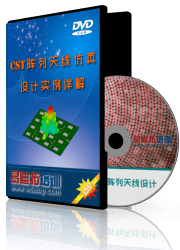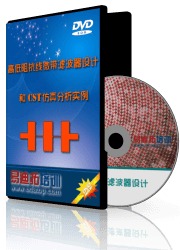- 易迪拓培训,专注于微波、射频、天线设计工程师的培养
CST2013: Asymptotic Solver Angle Sweep
 Simulation: Solver
Simulation: Solver  Start Simulation
Start Simulation  Excitation angle sweeps / Observation angle sweeps (Add / Edit)
Excitation angle sweeps / Observation angle sweeps (Add / Edit)
This dialog box allows you to add or edit a particular angular sweep definition for excitation angle sweeps or observation angle sweeps.
For excitation angle sweeps, the solver will calculate the results for all angular directions defined by individual sweep definitions. You may either just add one excitation angle sweep definition for uniform sampling or you may add multiple excitation angle sweeps in order to achieve a non-uniform angular sampling. Please note that the number of excitation angles has a linear influence on the solver runtime.
For observation angle sweeps, the solver will calculate the scattered field results separately for each sweep definition. Depending on the type of the sweep, the results can then either be visualized as one dimensional curves or optionally as two dimensional farfield plots. Typically, a relatively coarse two dimensional sweep is defined in combination with one or more refined one dimensional sweeps. Please note that the number of observation angles has a linear influence on the solver runtime.
Type
Specify the type of the angular sweep definition. You can choose one of the following options:
Single Point | Specify a single angular point for this sweep definition. In this case, only the Theta and Phi entry fields become active. |
Theta / Phi
| Specify a two dimension sweep for both angles theta and phi. For observation angle sweeps, the results can be visualized either as a two dimensional farfield plot or as one dimensional cross-section plots. For this selection, all theta and phi sweep definition entry fields become active. Please note that this option will not be available for range profile mode. |
Theta | Specify a one dimensional sweep for the theta angle while keeping the phi angle fixed. For observation angle sweeps, the result can be visualized as one dimensional curve only. Once this type becomes selected, the theta sweep definition entry fields and the Phi entry field become active. |
Phi | Specify a one dimensional sweep for the phi angle while keeping the theta angle fixed. For observation angle sweeps, the result can be visualized as one dimensional curve only. Once this type becomes selected, the phi sweep definition entry fields and the Theta entry field become active. |
Store rays for each excitation direction
This option is available for excitation angle sweeps or observation angle sweeps in monostatic or range profile mode. The setting specifies whether the rays will be stored for each angular direction defined by the angular sweep.
Theta min / Phi min
Specify the lower angular bound for the sweep definition. The availability of these entry fields depends on the Type definition.
Theta max / Phi max
Specify the upper angular bound for the sweep definition. The availability of these entry fields depends on the Type definition.
Theta step / Phi step
Specify the angular step width for the sweep definition. The step width must match with the specification of the lower and upper angular bounds. The availability of these entry fields depends on the Type definition.
Theta / Phi
Specify the fixed angle in case of a one dimensional sweep definition or a single point specification. The availability of these entry fields depends on the Type definition.
OK
Accepts the changes and closes the dialog.
Cancel
Closes this dialog box without performing any further action.
Help
Shows this help text.
CST微波工作室培训课程套装,专家讲解,视频教学,帮助您快速学习掌握CST设计应用
上一篇:CST2013: Boundary Conditions - Symmetry Planes
下一篇:CST2013: Boundary Conditions - Thermal
CST濞戞搩鍘介弸鍐喆閸℃侗鏆ラ柛鈺冾攰椤斿嫰寮▎鎴旀煠 | More...
 最全面、最专业的CST微波工作室视频培训课程,可以帮助您从零开始,全面系统学习CST的设计应用【More..】
最全面、最专业的CST微波工作室视频培训课程,可以帮助您从零开始,全面系统学习CST的设计应用【More..】
频道总排行
- CST2013: Mesh Problem Handling
- CST2013: Field Source Overview
- CST2013: Discrete Port Overview
- CST2013: Sources and Boundary C
- CST2013: Multipin Port Overview
- CST2013: Farfield Overview
- CST2013: Waveguide Port
- CST2013: Frequency Domain Solver
- CST2013: Import ODB++ Files
- CST2013: Settings for Floquet B










